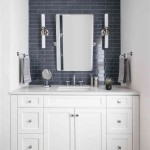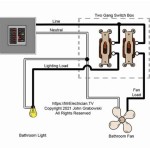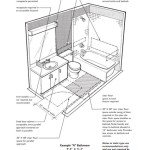Fitting A Bathroom Sink Drain: A Comprehensive Guide
The bathroom sink drain is a crucial component of any bathroom plumbing system. A properly installed drain ensures efficient wastewater removal and prevents leaks, odors, and potential water damage. This article provides a comprehensive guide to fitting a bathroom sink drain, covering essential tools, preparation steps, and detailed installation procedures.
Understanding the different types of bathroom sink drains is paramount before commencing the installation process. The most common types include pop-up drains, lift-rod drains, and grid drains. Pop-up drains are activated by a lever behind the faucet, allowing for easy opening and closing. Lift-rod drains, also operated by a lever, utilize a more intricate mechanism for controlling the stopper. Grid drains, typically found in vessel sinks, are permanently open and prevent large objects from entering the drainpipe. The choice of drain depends on personal preference, sink style, and existing plumbing configurations.
Selecting the appropriate drain assembly requires careful consideration of the sink's dimensions and the existing plumbing connections. The drain flange, which sits inside the sink basin, must fit snugly and create a watertight seal. The drain tailpiece, which connects the drain flange to the P-trap, must be of the correct length and diameter to align with the existing plumbing. Failure to choose the right components can lead to leaks and installation difficulties.
Essential Tools and Materials
Before beginning the installation, gather the necessary tools and materials. This will streamline the process and minimize potential delays. Essential tools include:
- Adjustable wrench: For tightening and loosening nuts and couplings.
- Basin wrench: Designed to reach nuts in tight spaces under the sink.
- Plumber's putty: Used to create a watertight seal between the drain flange and the sink basin.
- Plumber's tape (Teflon tape): Applied to threaded connections to prevent leaks.
- Channel-lock pliers: Useful for gripping and turning larger plumbing components.
- Screwdriver (Phillips and flathead): Depending on the type of drain assembly.
- Utility knife: For trimming excess plumber's putty.
- Bucket: To catch water during drain removal.
- Clean rags: For wiping up spills and cleaning surfaces.
In addition to these tools, the following materials will be required:
- New bathroom sink drain assembly: The appropriate type and size for the sink.
- Replacement P-trap (optional): If the existing P-trap is damaged or corroded.
- New supply lines (optional): If the existing supply lines are old or brittle.
Having all the necessary tools and materials readily available will contribute to a smoother and more efficient installation process.
Preparation: Removing the Old Drain
Prior to installing the new drain, the old drain assembly must be removed. This process requires careful attention to prevent damage to the sink or existing plumbing.
The first step is to shut off the water supply to the faucet. Locate the shut-off valves under the sink and turn them clockwise until they are fully closed. After shutting off the water, place a bucket under the P-trap to catch any remaining water in the drainpipe.
Next, disconnect the P-trap from the drain tailpiece. Use channel-lock pliers or an adjustable wrench to loosen the slip nuts that connect the P-trap to the tailpiece and the drainpipe. Be prepared for water to spill out as the connections are loosened.
Once the P-trap is removed, disconnect the lift-rod or pop-up mechanism, if applicable. This typically involves loosening a screw or clip that holds the mechanism in place. Carefully detach the linkage and set it aside.
The next step is to loosen the nut that secures the drain flange to the sink basin. Use a basin wrench or adjustable wrench to turn the nut counterclockwise. This nut can be difficult to access and may require some patience.
After the nut is loosened, carefully push the drain flange up from the bottom of the sink. If the flange is stuck, gently tap it with a rubber mallet or use a utility knife to break the seal of the old plumber's putty.
Once the drain flange is removed, clean the sink basin thoroughly to remove any remaining plumber's putty or debris. A utility knife and clean rags may be necessary to achieve a clean surface.
Inspect the existing drainpipe for any signs of corrosion or damage. If necessary, replace the drainpipe or any damaged components before proceeding with the installation of the new drain.
Installation: Assembling the New Drain
With the old drain removed and the sink basin cleaned, the installation of the new drain can begin. This process requires careful attention to detail to ensure a watertight seal and proper functionality.
The first step is to apply a generous rope of plumber's putty around the underside of the drain flange. Ensure that the putty is evenly distributed to create a complete seal against the sink basin. Roll the plumber's putty between your hands to soften it and make it more pliable.
Insert the drain flange into the drain opening in the sink basin. Press down firmly to ensure that the putty makes good contact with the sink surface. Remove any excess putty that squeezes out from under the flange with a utility knife.
From underneath the sink, slide the rubber or plastic washer onto the drain tailpiece. Follow this with the cardboard or metal friction washer, and finally the mounting nut. Tighten the mounting nut by hand until it is snug.
Use a basin wrench or adjustable wrench to tighten the mounting nut further. Be careful not to overtighten the nut, as this can damage the sink or drain assembly. Tighten the nut until the drain flange is securely seated against the sink basin and the putty is compressed.
Connect the drain tailpiece to the P-trap. Ensure that the slip nuts are properly aligned and tightened securely with channel-lock pliers or an adjustable wrench. Avoid overtightening, which can crack the plastic components.
If the drain assembly includes a lift-rod or pop-up mechanism, install it according to the manufacturer's instructions. Ensure that the linkage is properly aligned and that the stopper functions smoothly.
After completing the installation, turn on the water supply slowly and check for leaks around the drain flange, tailpiece connections, and P-trap. If any leaks are detected, tighten the connections further or reapply plumber's putty as necessary.
Test the drain by filling the sink with water and then opening the stopper. Observe the drainage to ensure that the water flows freely and that there are no leaks. Make any necessary adjustments to the stopper mechanism to ensure that it seals properly.
Once the installation is complete and all leaks have been resolved, clean up any excess plumber's putty or debris. Dispose of the old drain assembly and any used materials properly.
Preventing Common Problems
Several common problems can arise during or after the installation of a bathroom sink drain. Being aware of these potential issues and knowing how to address them can prevent costly repairs and ensure a long-lasting, leak-free installation.
One common problem is leaks around the drain flange. This is often caused by insufficient plumber's putty or an improperly tightened mounting nut. To resolve this issue, remove the drain flange, reapply a generous amount of plumber's putty, and tighten the mounting nut securely.
Another common problem is leaks at the tailpiece connections. This is usually due to loose slip nuts or damaged washers. Tighten the slip nuts firmly or replace the washers if they are worn or cracked.
A clogged drain can also occur after the installation, especially if debris or hair enters the drainpipe during the process. To prevent clogs, use a strainer or hair catcher in the sink basin. If a clog does occur, use a plunger or drain snake to clear the blockage.
Improperly aligned lift-rod or pop-up mechanisms can also cause problems. Adjust the linkage to ensure that the stopper opens and closes smoothly. Consult the manufacturer's instructions for specific adjustment procedures.
By addressing these potential problems proactively, the longevity and efficiency of the bathroom sink drain can be significantly improved.
Install A Drain Stopper So The Is Removable
How To Install Bathroom Sink Drain Queen Bee Of Honey Dos

How To Fit A Bathroom Sink Diy Guides Victorian Plumbing

How To Install A Pipe From Sink Drain Wall Ehow

How To Install A Bathroom Sink Hooking Up Drain

Bianchina Swapping Out A Bathroom Sink Drain And Pop Up

Installing A Bathroom Sink Drain Efficient Plumber

How To Easily Connect The Plumbing For A New Bathroom Sink Hometips

How To Replace A Sink Stopper Quick And Simple Home Repair

How To Install P Trap And Bathroom Sink Drain Piping Easy Installation For Beginners
Related Posts







